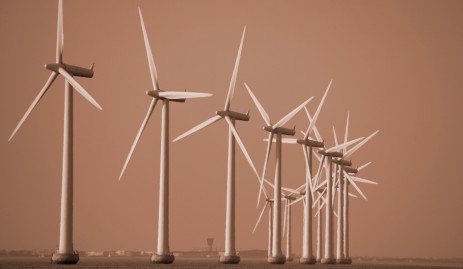 The California Assembly has passed legislation [PDF] that takes the first step to requiring that a percentage of electricity generated in the state be stored.
The California Assembly has passed legislation [PDF] that takes the first step to requiring that a percentage of electricity generated in the state be stored.
Electricity, of course, is the ultimate perishable commodity. If the bill is approved by the California Senate and signed by Gov. Arnold Schwarzenegger, it would apparently be the first time a state will move toward mandating that electricity generated by wind farms, solar power plants, and other intermittent sources be stored for use during peak demand.
That’s key if California is to meet its ambitious mandates to obtain 33 percent of its electricity from renewable sources by 2020.
“Electric energy storage is an emerging industry that offers the possibility to solve a number of major obstacles to the achievement of a sustainable electricity future,” according to an analysis [PDF] of the legislation prepared by the California Public Utilities Commission in May. “It can effectively address problems such as the integration of intermittent renewables.”
Sponsored by Assembly member Nancy Skinner, a Berkeley Democrat, the bill has been watered down to make it palatable to the state’s utilities and regulators. It originally required the state’s utilities to obtain energy storage systems capable of providing at least 2.25 percent of average peak electrical demand by 2014. By 2020 the target would rise to at least 5 percent.
The latest version of the bill now wending its way through the state Senate requires the California Public Utilities Commission to open proceedings on energy storage and by October 2013 to adopt an initial target — if appropriate — for utilities to meet by the end of 2015.
California Attorney General Jerry Brown, the Democratic candidate for governor, is sponsoring the legislation, which is backed, not surprisingly, by the renewable energy industry and venture capitalists.
“It’s part of our bigger effort to deal with climate change,” Cliff Rechtschaffen, Special Assistant Attorney General, told me. “When we looked at how to develop renewables, the technology is here but stalled by lack of regulatory focus.”
Utilities spend billions of dollars building so-called peaker plants that operate just hours a year to supply electricity and avoid blackouts when demand spikes — say, on a hot day when everyone cranks up their air conditioners.
Such costs — and greenhouse gas emissions — could be cut or reduced if electricity stored from wind farms or solar power plants could be dispatched when demand rises.
A report prepared for the California Energy Commission and released this month concluded that adding gigawatts of wind and solar energy to the grid to meet renewable energy mandates would require “major alterations to system operations.”
Without storage, more natural gas power plants or hydroelectric facilities would need to be built to smooth out grid operations as increasing amounts of solar and wind energy comes online, according to the report prepared by Kema, an energy consulting firm.
“Storage can be up to two to three times as effective as adding a combustion turbine to the system,” the report stated.
The cost and feasibility of such storage systems is another matter, as it remains a nascent industry.
Most efforts focus on using batteries or mechanical systems like flywheels to store electricity. California utility PG&E has launched a pilot project to store electricity in the form of compressed air. Some developers of solar power plants intend to use molten salt to capture heat that can be released and used to drive an electricity-generating turbine after the soon goes down.
“This bill moves storage to the top of the regulatory agenda where it belongs,” says Rechtschaffen.



